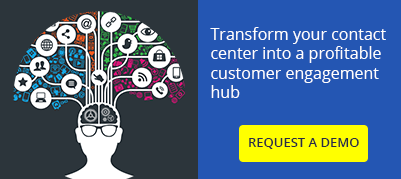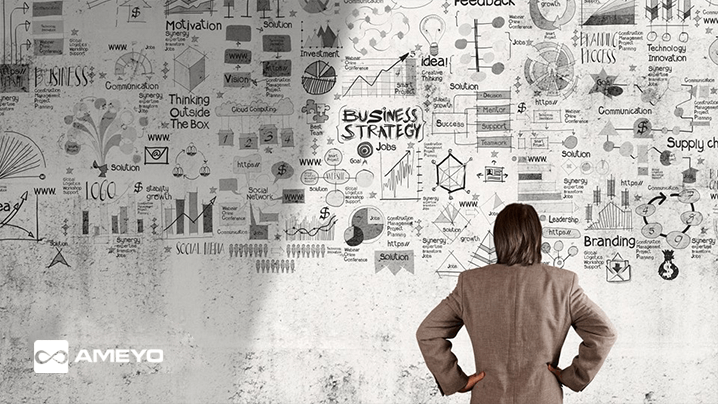The basic idea deeply rooted in any brand is – engaged customers are happy customers. It is one of the keys to building long-term customer relationships. But how does a company start to develop, implement, improve, and grow customer engagement? The answer is simple – by using a customer engagement model.
We all know about customer engagement. It is the science of building customer relationships to facilitate business goals. It is the act of enticing the customer to take action. In the past century, things have not really changed when it comes to engaging customers.
Traditional marketing requires everyone to take an action to sell something. However, modern digital technology has made it possible to make the entire process more interesting and engaging. Moreover, it has made the whole process much less expensive with the advent of technologies of multiple channel interactions such as email, chat, and SMS, social media. Today’s customer is more digitally connected than ever in human history.
To really understand customer engagement, it’s important to understand the various stages a customer goes through when engaging with any company.
To make the engagement more effective, the right call center solution can drive insane results.
Stages of Customer Engagement
Although every customer experiences a different customer journey when interacting with a brand, most go through the same stages:
- Unawareness: This is the stage where a customer does not yet know about your company. Getting the word out is the best possible strategy here – you need to generate content (text, audio, visual) to attract as many visitors as possible. Visitors need you to teach them about your offerings, your expertise, and your knowledge of every single aspect of your business. If you have the budget, go for events or external advertising to make your first impression.
- Discovery: This is the beginning stage where customers just find out about your company. Try to get an idea of your intended audience – know who they are, where they come from, and how they found out about you. In marketing, this information will be very useful when building customer info in the CRM. Don’t forget to consider offline sources as well, such as events and advertising.
- Consideration: In this stage, customers are still undecided about whether to choose your brand or your competitor. They are neutral towards your company, as they might not have formed a brand image in their mind about your company. They are still evaluating their choices, and you need to really offer some compelling content to make them choose you. Think about case studies like VADS, product/service comparisons, and customer reviews.
- Conversion: This is the stage where the customer has made a purchase decision and chooses you over the rest of the competition. As soon as a purchase event occurs (i.e. a visitors completes a purchase), send out some form of communication (email, text, notification, etc.) to thank them. Also, if a customer drops out of the journey before he converts, find out why that happened. To improve your chances, send some form of communication when any such event occurs.
- Growth through Value Creation: You might think that once the visitor has converted, your job is done. No! The hardest task is to retain the customer and make him loyal towards your brand by delivering value. In this stage, customers have trusted you with their money and have bought whatever product/service you have to offer.
You should use trigger-based or action-based marketing promotions to keep them engaged with your brand, and send them tips on how to use what they have bought. Look for opportunities to grow your business to foster customer relationships. Think about helpful guides, industry research, latest happenings, and achievements in this stage. Reward engaged customers and reach out to disengaged customers to try to get their interest.
Every stage in the customer engagement process should be planned out in advance, and a clear-cut customer engagement action plan should be put in place. Proper optimization and consistent implementation must be done to improve business value. Don’t disregard your disengaged or unaware visitors/customers, or they’ll go with your competition instead of choosing your brand.
How to Build a Customer Engagement Model
Now that we’re clear about the stages of customer engagement, it’s time to think about a strategy marketing teams can use to build and scale up their customer engagement in order to facilitate awesome experiences.
The purpose of a customer engagement model is to help a brand understand what led the customer to make the buying decision, what his motives were, and who was involved in his journey. In essence, it is the process which companies manage customer relationships throughout the entirety of their customer journey.
Every customer engagement model must include:
- Onboarding: This is focused on creating new customers, and getting as many visitors as possible, and creating a positive image in the minds of the customer.
- Retaining: This is focused on keeping customers or engaged visitors.
Aside from these two basic stages, customer engagement models need to be flexible enough to fit the entire customer journey according to the nature of the business. It should also focus on value creation and analysis, and how this can be used to enhance the overall customer experience. Lastly, a customer engagement model should not disregard unforeseen interactions and should support automated interactions as well.
Although every company has different business goals, here is a sample customer engagement model you can use and modify for your company:
- Outreach: In the outreach stage, focus on knowing your audience and their specific needs. Once this is done, try to identify potential market outreach methods and implement campaigns to facilitate this goal. Use surveys to find out about their needs, and try to engage them on webinars and internet forums to know their industry better.
- Acquisition: In the Acquisition stage, focus on the ‘why’ – why would a customer want to do business with you? Help solve his problems and you’ll be on the right track. Try to anticipate their questions beforehand, and release content and other audio-visual multimedia to help you do this.
- Get in Touch: In this stage, focus on the entire process of interacting with the converted lead and how to best engage him during this process.
- Maintain: In this stage, focus on maintaining the customer relationship and how to keep them interested in your brand. Appoint an account manager / customer relationship manager and keep updated with recent developments about the projects.
- Grow and Nurture: In this stage, focus on growing the relationship between the brand and customer, and how to nurture it into something the customer remembers in the time to come. Write them appreciation emails, letters, postcards, and offer incentives to peak their interest.
Are you using Whatsapp for Businees? Check this Free Ebook
This may or may not fit your organization, but it should give you a head start in building a customer-centric customer engagement strategy that suits your brand.
Once you have a working customer engagement model, use some customer engagement strategies to better engage customers along the customer journey.
To engage customers throughout the customer journey, it is vital to deliver a relevant, superior customer experience with each interaction. Ameyo FusionCX, built on the 3 pillars of customer experience, has all the right ingredients you need to engage customers effectively by delivering a seamless, relevant, and in-the-moment experience across the entire customer journey. Sign up today to find out




